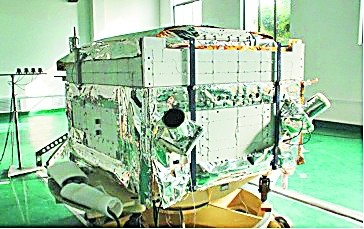China is set to launch its Dark Matter Particle Explorer (DAMPE) Satellite developed by the Chinese Academy of Sciences (CAS). The satellite is expected to be launched at the Jiuquan Satellite Launch Center in mid-December, the Xinhua News Agency reported.
According to the report, DAMPE and its carrier Long March 2-D rocket left Shanghai and headed for Jiuquan in Gansu Province in northwest China on Saturday, Nov.14. DAMPE is the first satellite in CAS's space science program.
The satellite and the carrier rocket have both passed the inspection and approval of CAS and are now fully ready for blast-off.
For the Long March 2-D rocket, it will be its 26th mission, the report said.
DAMPE, one of the first four scientific satellites in the CAS space program, will be launched to observe the direction, energy and electric charge of high-energy particles in space in search of dark matter.
The report said that the satellite will have the widest observation spectrum and highest energy resolution of any dark matter probe in the world.
Experts said that DAMPE is designed for increased payload, with the scientific payload weighing 1,410 kg and the whole satellite weighing 1,850 kg. It was designed to help cut down on the size and weight of the satellite and save launching costs.
Reports said that as part of its space study program, China also plans to launch three more satellites within the next two years, including one retrievable scientific research satellite, one for quantum science experiments, as well as a hard X-ray telescope for black hole and neutron star studies.
China is also set to launch SJ-10, a satellite for quantum science experiments that will be launched in the first half of 2016. It will carry out research in microgravity and space life science to provide scientific support to manned space missions.



























